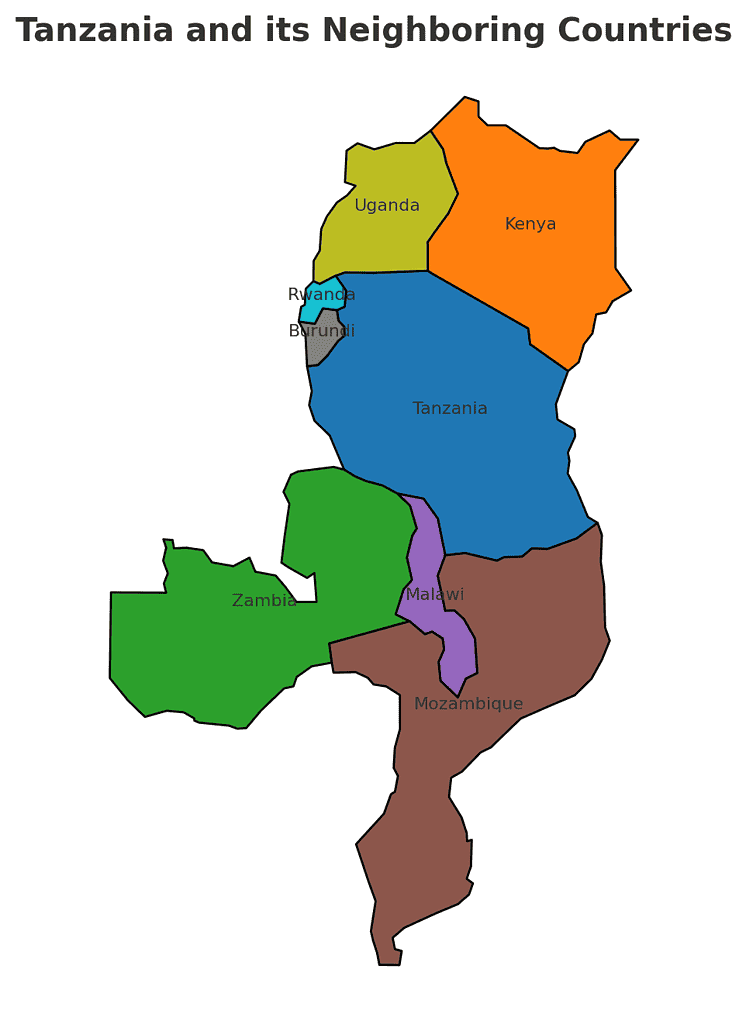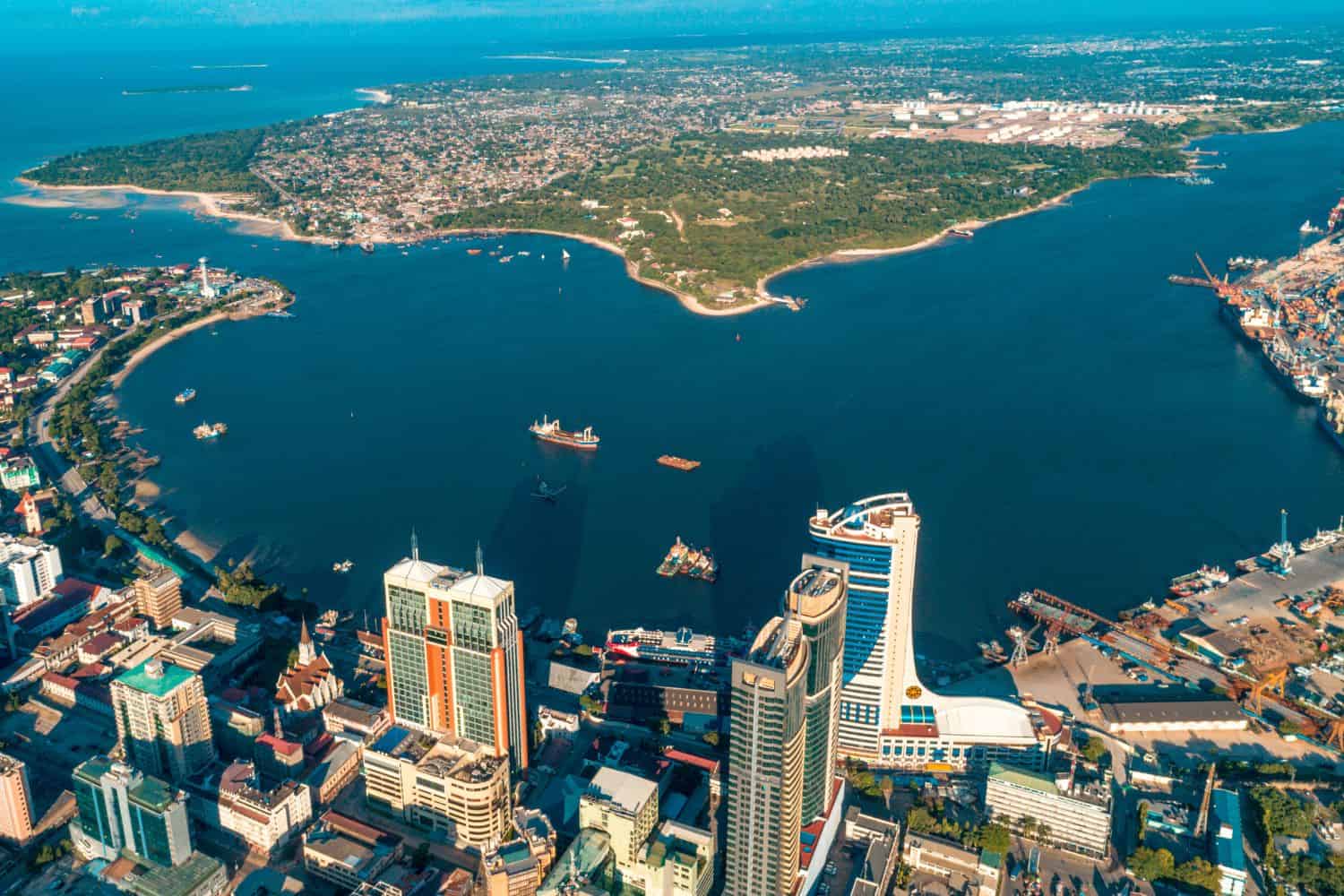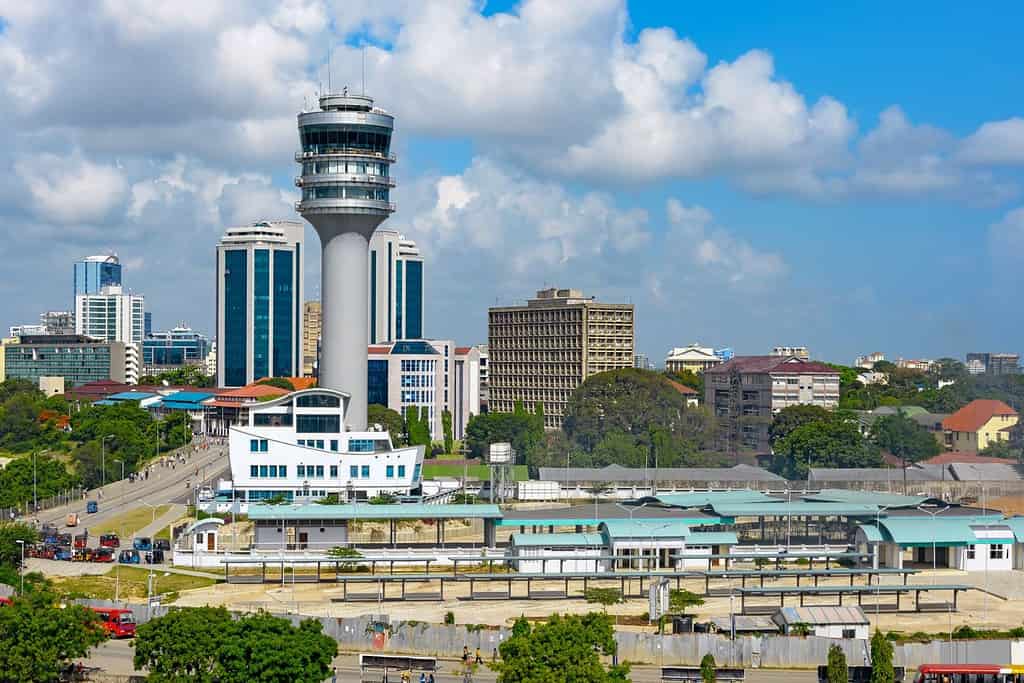Table of Contents
The geography of Tanzania is a captivating blend of diverse landscapes and historical significance. Situated in East Africa, this nation’s geographic location has played a pivotal role in shaping its history and cultural identity.
Nestled along the eastern coast of the continent, Tanzania geography beckons adventurous travelers with its expansive savannahs, majestic Mount Kilimanjaro, and idyllic coastal areas. From exploring the unique wildlife of the Serengeti to diving into the rich cultural tapestry of Dar es Salaam, Tanzania’s diverse landscapes and profound history offer an unforgettable journey for intrepid tourists seeking a unique and enriching experience.
The physical geography of Tanzania paints a picture of awe-inspiring natural wonders. From the iconic migration of wildebeests, showcasing the nation’s rich wildlife heritage, to the diverse ecosystems that range from the tropical rainforests of the Usambara Mountains to the shores of Zanzibar, Tanzania stands as a testament to nature’s grandeur.



Top Geographic Features of Tanzania
- Mount Kilimanjaro: Towering over northern Tanzania, Mount Kilimanjaro is the highest peak in Africa, significantly influencing the region’s climate and topography.
- Rufiji River: A major river system in Tanzania, the Rufiji runs through the southeastern part of the country, providing vital water resources for agriculture and local communities.
- Serengeti Plains: These expansive savannahs span northern Tanzania and are vital for the country’s rich biodiversity, playing host to the iconic annual wildebeest migration.
- Selous Game Reserve: Situated in the southern part of Tanzania, this reserve is one of the largest protected areas in Africa, marked by grasslands, woodlands, and riverine forests.
- Ngorongoro Crater: This vast caldera in northern Tanzania offers a unique ecosystem and is a premier wildlife-watching destination, home to a diverse range of species.
- Lake Victoria: Bordering the northwestern part of Tanzania, Lake Victoria is Africa’s largest lake by area and plays a fundamental role in the livelihoods of the region’s inhabitants.
- Lake Tanganyika: Running along Tanzania’s western boundary, this lake is one of the world’s longest freshwater lakes and hosts a rich aquatic life.
- Tarangire National Park: Located in northern Tanzania, this park is known for its baobab trees, large elephant herds, and diverse bird species.
- Zanzibar Archipelago: Off the eastern coast of Tanzania, these islands are celebrated for their pristine beaches, historic Stone Town, and rich cultural heritage.
- Ruaha National Park: Nestled in the heart of Tanzania, this park boasts extensive landscapes ranging from savannah to rolling hills, providing habitats for a plethora of wildlife.
These geographic features play a pivotal role in shaping Tanzania’s landscape, climate, and cultural history, making them central elements in defining the country’s geography.
Tanzania Geography

Exploring the Tanzania National Geographic canvas reveals a breathtaking array of geographic features. From the iconic Mount Kilimanjaro to the vast Serengeti plains and the spice-rich regions of Zanzibar, the country presents a captivating tapestry of natural wonders.
- Mountain Ranges – The Crown of Africa: Just as documentaries often feature towering mountain ranges, Tanzania is home to Mount Kilimanjaro, the highest peak in Africa. This iconic mountain not only adds to the country’s scenic beauty but also offers unique biodiversity and has shaped its cultural identity.
- Lakes – A Symphony of Life: Tanzania’s Lake Manyara National Park, with its alkaline lakes and rich wildlife, resembles the picturesque landscapes often captured in photographs. These pristine lakes, surrounded by woodlands and hills, reflect the region’s geological richness.
- Savannah – Expansive Plains of Adventure: Just as documentaries highlight vast landscapes, Tanzania’s Serengeti is known for its expansive plains that are home to the great wildlife migration. This fertile region tells stories of Maasai traditions and the country’s natural wealth.
- Historical Sites – Footprints of Ancient Civilizations: Tanzania’s historical sites, like the ruins of Kilwa Kisiwani, evoke memories of explorations that uncover ancient trade routes. These remnants stand as a testament to the country’s rich coastal heritage.
- Ethnic Diversity – A Mosaic of Cultures: Mirroring the National Geographic focus on diverse cultures, Tanzania is a blend of ethnic groups, including the Chaga, Maasai, and Sukuma. Each group contributes unique traditions, languages, and customs, forming a vibrant cultural tapestry.
- Wildlife – A Theater of Nature: Tanzania’s protected areas, such as the Ngorongoro Conservation Area, reflect a commitment to wildlife conservation. These regions serve as significant habitats for diverse species, preserving biodiversity in an awe-inspiring environment.
- Geological Marvels – Nature’s Spectacle: The country’s geological wonders, like the Olduvai Gorge, showcase Tanzania’s ancient history and natural beauty amidst the vast savannahs. Such sites offer insights into the evolutionary forces of nature at play.
- Coastal Exploration – The Soul of the Ocean: The pristine beaches and coral-rich regions of Zanzibar beckon travelers, much like voyages into mesmerizing marine territories. This coastal paradise offers insights into marine biodiversity and historical trade routes.
Tanzania geographic features are highlighted by the majestic presence of Mount Kilimanjaro. This towering mountain, which stands as an emblem of East Africa, provides a scenic backdrop for the nation’s diverse topography. The ancient trade routes along the Swahili Coast, once significant for commerce, are laced with tales of explorers and ancient civilizations.
Flowing gracefully through the Tanzanian landscape are the life-giving waters of the Rufiji and the Great Ruaha rivers, essential for agriculture and irrigation. Additionally, the expansive Selous Game Reserve and the unique landscapes of the Usambara Mountains enrich the country’s unique geography.
Tanzania Geographic Location

Tanzania geographic location is very strategic, and its position has played a significant role throughout history. Located in the eastern part of Africa, the country has been a nexus for trade, culture, and ideas, emphasizing its historical importance.
Borders of Tanzania
Tanzania shares borders with eight countries. Here is Tanzania physical geography with the neighboring countries and the approximate total length of each border:
- Kenya: The border between Tanzania and Kenya is approximately 769 kilometers long.
- Uganda: The border between Tanzania and Uganda is approximately 396 kilometers long.
- Rwanda: The border between Tanzania and Rwanda is approximately 217 kilometers long.
- Burundi: The border between Tanzania and Burundi is approximately 451 kilometers long.
- Zambia: The border between Tanzania and Zambia is approximately 338 kilometers long.
- Malawi: The border between Tanzania and Malawi is approximately 512 kilometers long.
- Mozambique: The border between Tanzania and Mozambique is approximately 756 kilometers long.

| Tanzania Neighboring Country | Border Length (Approximate) |
|---|---|
| Kenya | 769 kilometers |
| Uganda | 396 kilometers |
| Rwanda | 217 kilometers |
| Burundi | 451 kilometers |
| Democratic Republic of the Congo (DRC) | 459 kilometers |
| Zambia | 338 kilometers |
| Malawi | 512 kilometers |
| Mozambique | 756 kilometers |
These international borders define Tanzania’s connections to different regions and contribute to the country’s geopolitical significance as a crossroads between East Africa and Central Africa.
Geography of Dar es Salaam Tanzania

As the most populous city in Tanzania, Dar es Salaam is a captivating microcosm of the country’s human geography. Here, various ethnic groups, including the Chaga, Sukuma, Haya, and Makonde, coexist, contributing to the city’s vibrant cultural tapestry.
Dar es Salaam, the largest city in Tanzania
- City of Contrasts: Dar es Salaam is known for its stark contrasts, where modern skyscrapers coexist with traditional markets and neighborhoods, creating a unique blend of old and new.
- Indian Ocean: The Indian Ocean borders the city, playing a significant role in its trade and transportation.
- Dar es Salaam’s Elevation: The city is located near sea level, with the vast coastal plains stretching out around it.
- Green Spaces: Dar es Salaam is home to several beautiful parks and gardens, offering a serene escape amidst the bustling city.
- Dar es Salaam’s Historical Significance: With a history deeply rooted in colonial times, Dar es Salaam has witnessed various epochs and played a pivotal role in East African politics and trade.
- Diverse Architecture: The city showcases a diverse architectural heritage, reflecting influences from German, British, Arab, and modern styles.
- Taarab Music: Dar es Salaam is a center for Taarab music, and its vibrant music culture can be seen and heard throughout the city.
- State House: The historic State House, located in the heart of the city, is an iconic symbol of Tanzania’s political history.
- Dar es Salaam’s Economy: The city serves as Tanzania’s economic and cultural hub, attracting people from all over the country seeking opportunities and education.
- Population Growth: Dar es Salaam has experienced steady population growth, with a significant influx of migrants from various regions, leading to urbanization and infrastructure challenges.


Historical Geographical Importance of Tanzania
Throughout the ages, Tanzania’s geographical significance has made it a sought-after stage for historical drama. As empires and nations rose and fell, from the Arab traders to indigenous kingdoms and European colonizers, Tanzania’s geographic position played a pivotal role in shaping the world’s history.
- Strategic Gateway: Tanzania’s location as a gateway between the Indian Ocean and the vast expanse of East Africa has made it a strategic point for trade, cultural exchange, and military endeavors throughout history.
- Ancient Trade Routes: The ancient trade routes, including those linked to the Swahili Coast, passed through Tanzania, connecting various communities and facilitating the exchange of goods, ideas, and cultures.
- Arab Influence: Tanzania was a key territory during the era of Arab trade and influence, with Zanzibar playing a crucial role in the spice and slave trades.
- Wars of Independence: During the 20th century, Tanzania became a focal point of the wars of independence, where local heroes like Julius Nyerere led the charge against colonial rule.
- European Colonization: Tanzania’s geographic position attracted European powers, most notably Germany and later Britain, influencing its political and cultural landscape.
- Influence of Indigenous Kingdoms: Tanzania was home to various indigenous groups and kingdoms, including the Chaga, Sukuma, and Maasai, influencing its early history and culture.
- Conquests of the European Powers: The European colonization in the late 19th and early 20th centuries had a profound impact on Tanzania’s history, leading to a blend of cultures and traditions.
- The Serengeti and Maasai: The vast plains of the Serengeti and the iconic figure of the Maasai warrior have become symbols of the nation’s cultural and historical identity.
- Influence of Taarab and Bongo Flava: Tanzania’s position as a melting pot of cultures gave birth to musical genres like Taarab and Bongo Flava, which have since captivated the region and beyond, influencing its culture, art, and lifestyle.
The geographical position of Tanzania, located on the eastern coast of Africa, is a spectacular blend of natural wonders and historical richness. Known for its breathtaking wildlife reserves like the Serengeti and the Ngorongoro Crater, as well as the majestic Mount Kilimanjaro, Africa’s highest peak, Tanzania offers a stunning array of landscapes. It also boasts the Zanzibar Archipelago, renowned for its historical Stone Town and vibrant Swahili culture.
In conclusion, Tanzania’s geographical location has significantly shaped its history and identity. Bordering the Indian Ocean, it has been a hub for trade and cultural exchange between Africa and the broader Indian Ocean world, including the Middle East and Asia. The Swahili Coast, with its rich history of maritime trade, has been pivotal in the development of Swahili culture and the spread of Islam. Today, Tanzania continues to play an essential role in the economic, cultural, and environmental dynamics of East Africa.
More About Tanzania
[the-post-grid id=”50432″ title=”Tanzania Main page”]
